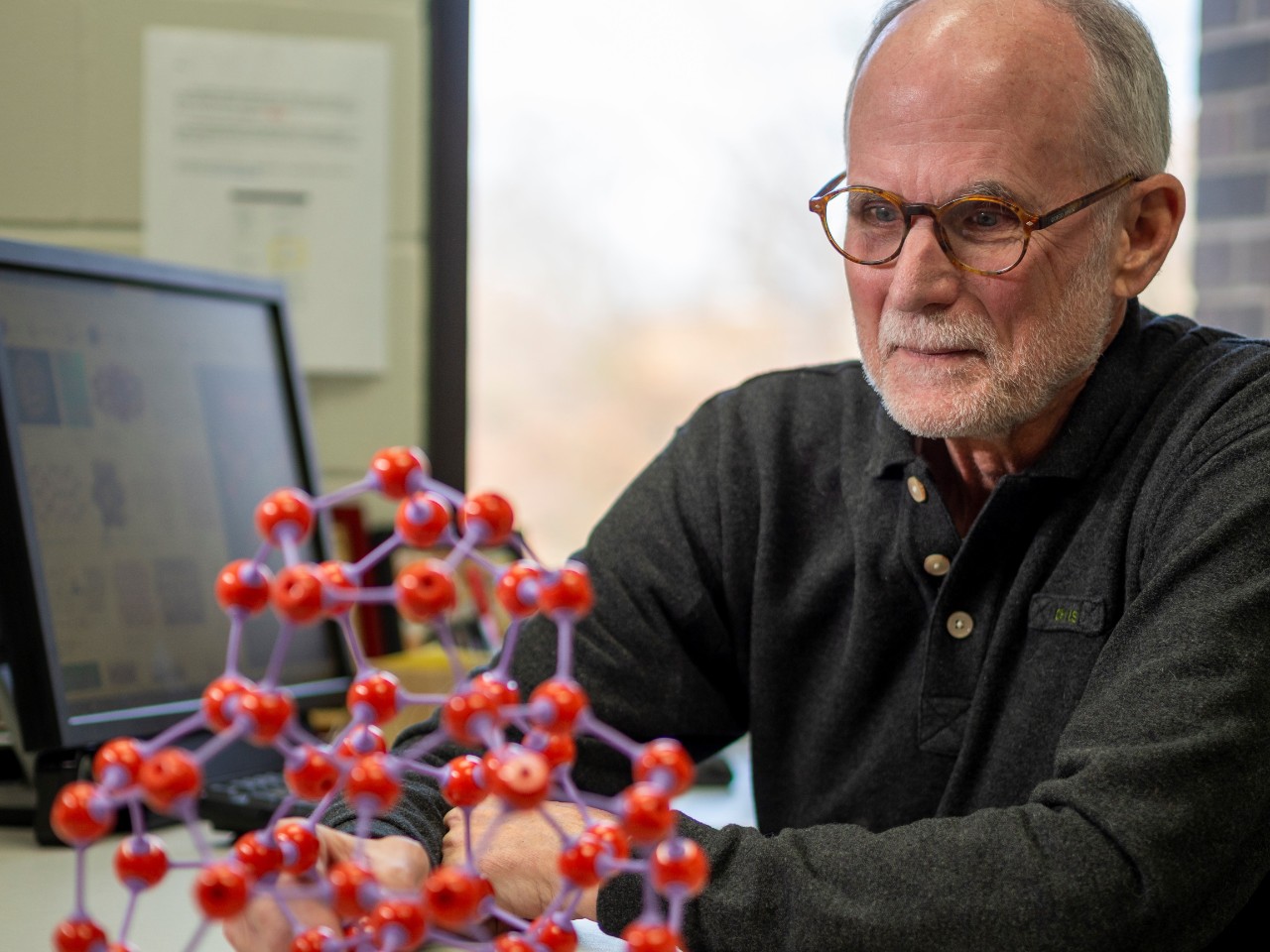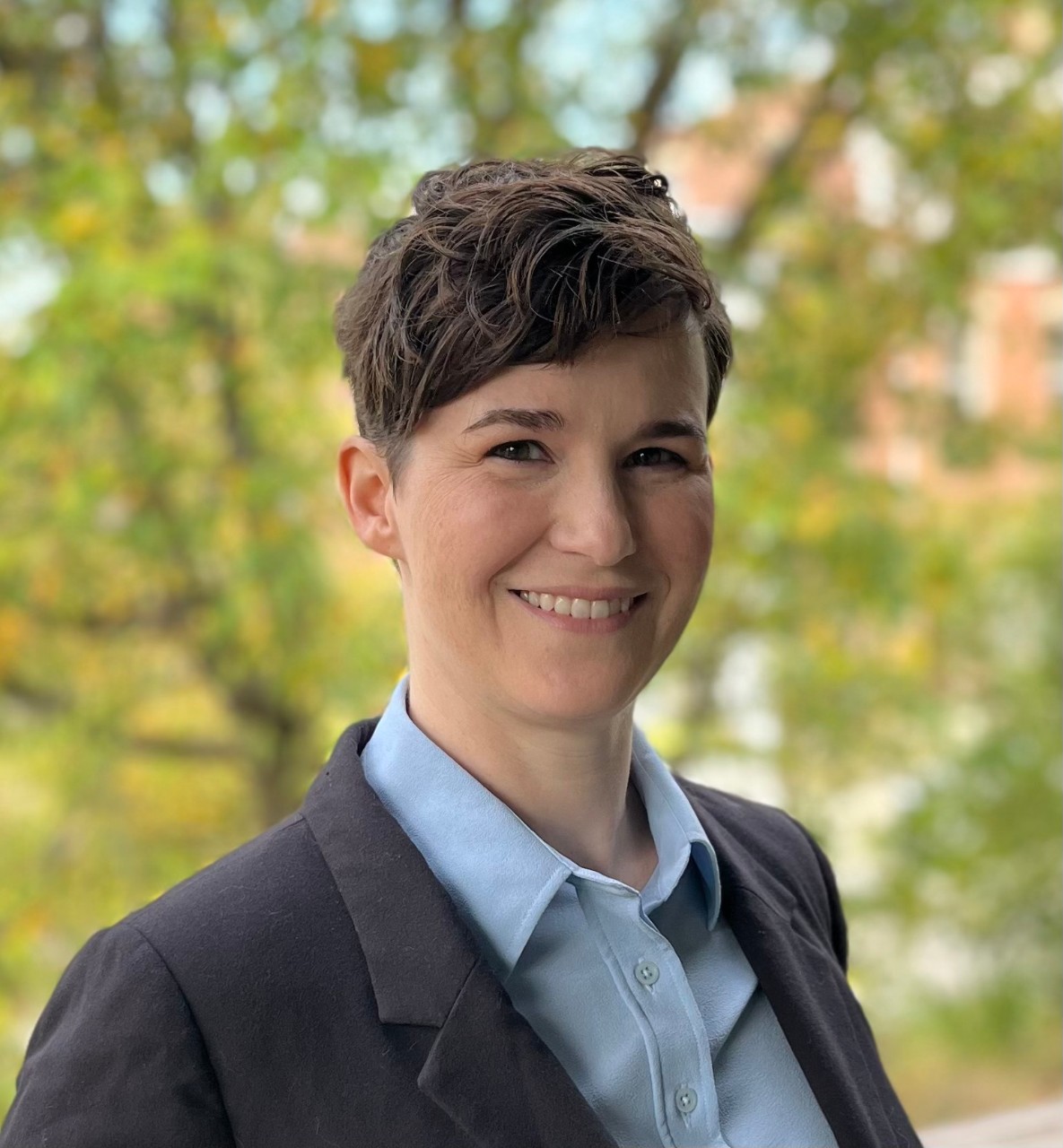
UC Clermont professor, alum receive patent for breakthrough chemotherapy technology
Research could lead to more effective drug delivery for cancer patients
For decades, Clifford Larrabee pursued a lofty goal: to cure cancer. This summer, with a patent secured for a ground-breaking cancer drug delivery system, Larrabee and his co-inventor have left their mark in the ongoing fight against the disease.
“I don’t know anyone who hasn’t been affected by cancer,” said Larrabee, professor emeritus in chemistry at the University of Cincinnati Clermont College. “And for the students working with me in the lab, their research has contributed directly to a potential cancer treatment.”
In 2019, Larrabee submitted a patent with co-inventor and former UC Clermont student Mary Warmin, who also served as a senior chemistry lab associate and adjunct instructor at the college while earning her PhD from UC. The patent is for a new nanocarrier targeted drug delivery system based on undecylenic acid — i.e., a more effective method of delivering chemotherapy drugs to cancer patients.
“It is gratifying to have our work recognized as novel, and I am thrilled to see this project cross a major milestone,” said Warmin, who completed her chemistry PhD in April. “My hope is that our drug delivery system will someday improve quality of life and outcomes for patients.”

Mary Warmin
Nanocarriers are even smaller than cells and help drugs dissolve in the blood while protecting them from the body’s defense mechanisms. Larrabee first wrote about the potential usage of nanocarriers to deliver drugs in his PhD dissertation in 1980. He started conducting nanocarrier research with students through UC’s Women in Science and Engineering program in the late 2000s.
After one student presentation, former UC College of Arts & Sciences Associate Professor and chemist Eddie Merino approached Larrabee. Merino had received a patent for a new cancer therapy, but in trials, the drug sustained too much damage to be effective before reaching tumors. Larrabee’s nanocarrier offered the perfect solution.
“A nanocarrier protects the drug from interactions that damage it until it reaches the tumor where it needs to work,” Larrabee said. “The nanocarriers also protect the chemo from enzymes in the bloodstream that try to kill it, which leads to fewer side effects.”
My hope is that our drug delivery system will someday improve quality of life and outcomes for patients.
Mary Warmin UC Clermont alum and patent co-inventor
Four versions of Larrabee’s nanocarrier capable of delivering the cancer therapy created by Merino are included in the patent, which covers 18 nanocarrier/chemotherapy combinations for breast, ovarian, prostate, lung, melanoma and acute myeloid leukemia cancers. The patent was submitted through UC’s Office of Innovation.
“I would like to see cancer cured or at least tamed,” Larrabee said. “This patent is a step in that direction and the result of many years of hard work in UC Clermont’s labs and by our students.”
UC’s WISE initiative, the university’s Office of Research and the UC Clermont donor-sourced Sophia Fund for Innovation have all provided support for cancer research at the college. In 2022, Jill Shirokawa, assistant professor of chemistry, received a $100,000 grant from the PhRMA Foundation to build on Larrabee’s work; she is working to identify antibiotics that can attack cancer stem cells. Those drugs also could be delivered via Larrabee’s nanocarriers.
“You can kill cancer stem cells with antibiotics,” Larrabee said. “And if you can kill them before they differentiate, maybe you can prevent metastasis.”
Larrabee officially retired in 2020 but has remained involved in UC Clermont’s labs. For the son of two chemists — Larrabee’s father helped create the popular drugs tetracycline and doxycycline — the patent represents the culmination of a life’s work.
“As a scientist, you don’t just teach; you do science,” Larrabee said. “I was in a place where I had student involvement and supportive leadership, and it was the best job in the world. The patent is validation that this wasn’t just a pipe dream — it was the real thing.”
Featured image at top: Clifford Larrabee, retired UC Clermont chemistry professor and researcher, who has received a patent for his novel cancer drug delivery system. Photo/Danny Kidd
About UC Clermont
UC Clermont College is in Clermont County on 91 beautifully wooded acres in Batavia Township. The college is an accredited, open-access college offering more than 60 associate degrees, certificates and bachelor’s degrees. UC Clermont is part of the nationally recognized University of Cincinnati. For more information, call 513-556-5400 or visit www.ucclermont.edu.
Related Stories
Cincinnati researchers want to know if MRIs can work better
June 28, 2024
WVXU and the Cincinnati Business Courier highlighted a new collaboration between the University of Cincinnati College of Medicine, UC Health GE HealthCare, JobsOhio, REDI Cincinnati and Cincinnati Children’s to create an MRI Research and Development Center of Excellence located on UC’s medical campus.
UC 1819 Innovation Hub workshop spreads AI awareness
June 28, 2024
Microsoft and Disrupt Now joined forces to run a June 24-27 seminar at UC’s 1819 Innovation Hub teaching Cincinnati residents how to responsibly use AI.
New project aims to better support teen mothers in Adams County
June 27, 2024
WCPO highlighted a partnership between the University of Cincinnati and the Adams County Health Department that is aiming to provide better support for teen mothers in the county.
Free Wi-Fi, work area coming to Greater Cincinnati
June 27, 2024
St. Lawrence Park in Price Hill now has free Wi-Fi and a furnished outdoor space for community members to access digital needs. The space is part of The Nodes Project, which stands for “Neighborhoods of Design Engagement": a collaboration between UC DAAP communication designers and community entities.
Study aimed at reducing opioid overdose deaths presents results
June 27, 2024
The University of Cincinnati's John Winhusen and Caroline Freiermuth discussed the evidence-based practices implemented during the HEALing Communities Study to fight the opioid epidemic with Spectrum News.
UC alum credits journalism program with early success
June 26, 2024
Zachary Jarrell came to the University of Cincinnati in 2019 to pursue a degree in statistics. In 2023, he graduated with a Bachelor’s in Journalism. For many undergraduates, the journey through college rarely takes the expected track. Detours happen, and majors change. When plans switch up, it can be helpful to a student’s success to find support. For Jarrell, it was the people he worked alongside in the journalism department who helped him on his journey. It has left a lasting impression on his life so far, guiding him to multiple internships as an undergraduate, real-world experience in prominent news outlets, and eventually a successful career in the highly competitive field of journalism.
University of Cincinnati, UC Health collaborate with GE HealthCare on MRI research center
June 26, 2024
The University of Cincinnati and UC Health are collaborating with GE HealthCare, JobsOhio, REDI Cincinnati and Cincinnati Children’s to create an MRI Research and Development Center of Excellence located on UC’s medical campus.
The health impact of living near a natural gas leak
June 25, 2024
UC College of Arts and Sciences Professor Amy Townsend-Small talks to the BBC about the health issues faced by neighbors of leaking natural gas wells.
Male birth control gel inches towards FDA approval
June 25, 2024
The University of Cincinnati's Wesley Baas spoke with Yahoo News and the Cincinnati Enquirer about a new male birth control gel that could be close to receiving FDA approval.
University of Cincinnati Cancer Center launches Blood Cancer Healing Center
June 25, 2024
The University of Cincinnati Cancer Center celebrated the opening of its state-of-the-art Blood Cancer Healing Center June 24.
